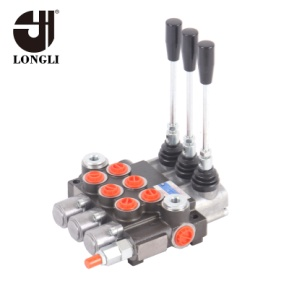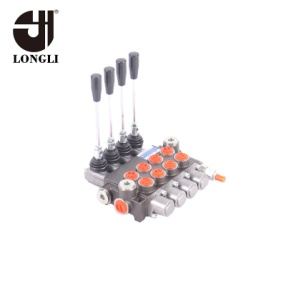Ventilation butterfly valve structure features 1 The new structure of the medium-line disc and short-structure steel plate is designed and manufactured with compact structure, light weight, easy installation, small flow resistance and large circulation. Lightweight operation 2 No connecting rods, bolts, etc., reliable operation and long service life. Can be installed in multiple stations, not affected by medium flow. Widely used in building materials, metallurgy, mining, electric power, etc. The medium temperature is ≤300°C, the nominal pressure is 0.1Mpa. Use: This butterfly valve is a non-closed butterfly valve. Used to connect, open, close or adjust the amount of media.
Working principle The ventilation butterfly valve is driven by the motor to drive the actuator, so that the disc can rotate freely within the range of 90° to achieve the purpose of opening and closing or regulating the flow of the medium. As a kind of component used to realize the on-off and flow control of pipeline system, rubber-lined butterfly valve has been widely used in many fields such as petroleum, chemical, metallurgy and hydropower. In the well-known butterfly valve technology, the sealing form is mostly sealed, and the sealing materials are rubber, polytetrafluoroethylene, and the like. Due to structural limitations, it is not suitable for industries such as high temperature resistance, high pressure, corrosion resistance and wear resistance. A relatively advanced butterfly valve is a three-eccentric metal hard sealing butterfly valve. The valve body and the valve seat are connected members, and the outer surface of the valve seat seal is welded with a temperature-resistant and corrosion-resistant alloy material. The multi-layer soft stack sealing ring is fixed on the valve plate. Compared with the aggressive butterfly valve, the butterfly valve has high temperature resistance, is light in operation, and has no friction when opening and closing. When closing, the seal is compensated with the increase of the torque of the transmission mechanism, and the butterfly valve is improved. The sealing performance and the advantage of extending the service life.
Ventilation butterfly valve classification construction, device points 1 device position, height, import and export direction must meet the design requirements, pay attention to the direction of the media flow should be consistent with the arrow direction of the valve body, the connection should be firm and tight. 2 The visual inspection must be carried out before the valve device. The nameplate of the valve should comply with the current national standard "General Valve Mark" GB12220. For valves with a working pressure greater than 1.0 MPa and a shut-off effect on the main pipe, the strength and rigorous performance tests shall be carried out before the device, and shall be used after passing the test. In the strength test, the test pressure is 1.5 times the nominal pressure, and the continuation time is not less than 5 minutes. In the rigorous test, the test pressure is 1.1 times the nominal pressure; the test continues in accordance with the requirements of GB50243. The ventilated butterfly valve is classified according to the working pressure. 1 The working pressure of the vacuum butterfly valve is lower than the butterfly valve of the standard atmosphere.
2 low pressure butterfly valve. Nominal pressure PN<1.6MPa butterfly valve.
3 medium pressure butterfly valve. The nominal pressure PN is 2.5--6.4 MPa butterfly valve.
4 high pressure disc valve. The nominal pressure PN is a 100--80.0 MPa butterfly valve.
5 ultra high pressure butterfly valve. Nominal pressure PN>100MPa butterfly valve.
Ventilation butterfly valves are classified according to operating temperature. 1 High temperature butterfly valve. t>450 °C butterfly valve 2 medium temperature disc valve. 120C<t<450C butterfly valve 3 normal temperature butterfly valve. A 40C < t 4 low temperature butterfly valve. A 100<t<40C butterfly valve E ultra-low temperature butterfly valve. t<一100C butterfly valve ventilation butterfly valve according to the connection mode 1 pair of clip butterfly valve 2 flange butterfly valve 3 ear butterfly valve 4 welded butterfly valve according to structural form classification 1 center sealing butterfly valve 2 single eccentric sealing coal valve 3 double eccentric sealing butterfly valve 4 three The eccentric sealing 跺 valve is classified into a soft sealing butterfly valve according to the sealing surface material.
1 The sealing pair consists of non-metallic soft materials for non-metallic soft materials.
2 The sealing pair consists of metal hard materials for non-metallic soft materials.
2 metal hard seal butterfly valve. The sealing pair consists of metal hard materials for metal hard materials.
Knife type gate valve, stainless steel ball valve, stainless steel butterfly valve manufacturer Yongjia County Zhuozheng Valve Factory, welcome customers to inquire
This article is reproduced from: http://
Working principle The ventilation butterfly valve is driven by the motor to drive the actuator, so that the disc can rotate freely within the range of 90° to achieve the purpose of opening and closing or regulating the flow of the medium. As a kind of component used to realize the on-off and flow control of pipeline system, rubber-lined butterfly valve has been widely used in many fields such as petroleum, chemical, metallurgy and hydropower. In the well-known butterfly valve technology, the sealing form is mostly sealed, and the sealing materials are rubber, polytetrafluoroethylene, and the like. Due to structural limitations, it is not suitable for industries such as high temperature resistance, high pressure, corrosion resistance and wear resistance. A relatively advanced butterfly valve is a three-eccentric metal hard sealing butterfly valve. The valve body and the valve seat are connected members, and the outer surface of the valve seat seal is welded with a temperature-resistant and corrosion-resistant alloy material. The multi-layer soft stack sealing ring is fixed on the valve plate. Compared with the aggressive butterfly valve, the butterfly valve has high temperature resistance, is light in operation, and has no friction when opening and closing. When closing, the seal is compensated with the increase of the torque of the transmission mechanism, and the butterfly valve is improved. The sealing performance and the advantage of extending the service life.
Ventilation butterfly valve classification construction, device points 1 device position, height, import and export direction must meet the design requirements, pay attention to the direction of the media flow should be consistent with the arrow direction of the valve body, the connection should be firm and tight. 2 The visual inspection must be carried out before the valve device. The nameplate of the valve should comply with the current national standard "General Valve Mark" GB12220. For valves with a working pressure greater than 1.0 MPa and a shut-off effect on the main pipe, the strength and rigorous performance tests shall be carried out before the device, and shall be used after passing the test. In the strength test, the test pressure is 1.5 times the nominal pressure, and the continuation time is not less than 5 minutes. In the rigorous test, the test pressure is 1.1 times the nominal pressure; the test continues in accordance with the requirements of GB50243. The ventilated butterfly valve is classified according to the working pressure. 1 The working pressure of the vacuum butterfly valve is lower than the butterfly valve of the standard atmosphere.
2 low pressure butterfly valve. Nominal pressure PN<1.6MPa butterfly valve.
3 medium pressure butterfly valve. The nominal pressure PN is 2.5--6.4 MPa butterfly valve.
4 high pressure disc valve. The nominal pressure PN is a 100--80.0 MPa butterfly valve.
5 ultra high pressure butterfly valve. Nominal pressure PN>100MPa butterfly valve.
Ventilation butterfly valves are classified according to operating temperature. 1 High temperature butterfly valve. t>450 °C butterfly valve 2 medium temperature disc valve. 120C<t<450C butterfly valve 3 normal temperature butterfly valve. A 40C < t 4 low temperature butterfly valve. A 100<t<40C butterfly valve E ultra-low temperature butterfly valve. t<一100C butterfly valve ventilation butterfly valve according to the connection mode 1 pair of clip butterfly valve 2 flange butterfly valve 3 ear butterfly valve 4 welded butterfly valve according to structural form classification 1 center sealing butterfly valve 2 single eccentric sealing coal valve 3 double eccentric sealing butterfly valve 4 three The eccentric sealing 跺 valve is classified into a soft sealing butterfly valve according to the sealing surface material.
1 The sealing pair consists of non-metallic soft materials for non-metallic soft materials.
2 The sealing pair consists of metal hard materials for non-metallic soft materials.
2 metal hard seal butterfly valve. The sealing pair consists of metal hard materials for metal hard materials.
Knife type gate valve, stainless steel ball valve, stainless steel butterfly valve manufacturer Yongjia County Zhuozheng Valve Factory, welcome customers to inquire
This article is reproduced from: http://
Monoblock valves have many outstanding features including high performance, high efficiency, small volume, mass flow, and leak proof. In addition, the compact direction control valves have fixed and big pull rod to control direction, providing various ports and circuit valves. Our monoblock Directional Control Valve offers various operation methods including manual control, pneumatic control, hydraulic and electro-hydraulic control and can select these methods according to customers' requirement.


Monoblock Valve
Monoblock Valve,Hydraulic Monoblock Valves,Hydraulic Monoblock Control Valves,Monoblock Control Valve
Jinan Longli Hydraulic Device Co.,Ltd , http://www.longlihydro.com